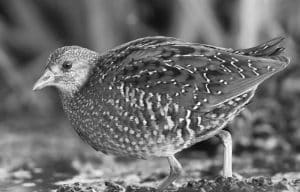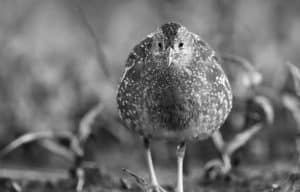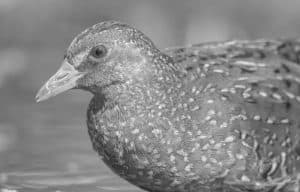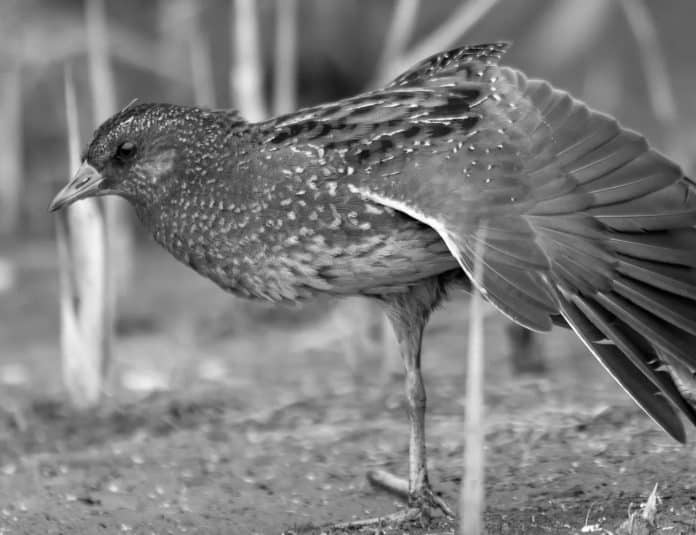Introduction to the Spotted Crake
The Spotted Crake (Porzana porzana) is a small and elusive waterbird that can be found in various parts of the world, including Tanzania, in East Africa. This fascinating bird is known for its cryptic plumage, which allows it to blend seamlessly into its wetland habitats. In this article, we will delve into the habitat and distribution of the Spotted Crake in Tanzania, as well as explore its physical characteristics and behavior.
Habitat and Distribution of the Spotted Crake in Tanzania

The Spotted Crake is primarily a marsh-dwelling bird, preferring wetland habitats such as swamps, marshes, and shallow lakes. In Tanzania, this species can be found in several key locations, including the Serengeti National Park, Lake Victoria, and the Selous Game Reserve. These areas provide the ideal conditions for the Spotted Crake, with their abundance of aquatic vegetation and shallow waters.
The distribution of the Spotted Crake in Tanzania is relatively widespread, although it tends to be more concentrated in the northern regions of the country. This bird is a migratory species, with individuals traveling to Tanzania during the non-breeding season from their breeding grounds in Eurasia. The best time to spot the Spotted Crake in Tanzania is during the wet season when water levels are high, providing ample feeding opportunities for this waterbird.
Physical Characteristics and Behavior of the Spotted Crake
Measuring around 20 centimeters in length, the Spotted Crake is a small bird with a plump body and short tail. Its plumage is beautifully adapted for camouflage, with a combination of brown, black, and white feathers that help it blend into its marshy surroundings. The most distinctive feature of the Spotted Crake is its red eyes, which stand out against its cryptic coloration.
Despite its small size, the Spotted Crake is an excellent swimmer and can often be seen foraging in the water for small aquatic invertebrates, seeds, and insects. It has a secretive nature and tends to stay hidden among the reeds and vegetation, making it challenging to spot. However, its distinctive call, a series of rapid and repetitive notes, can help birdwatchers locate this elusive waterbird.
Breeding and Migration Patterns of the Spotted Crake in East Africa
The Spotted Crake breeds in the wetlands of Eurasia, including parts of Europe and Asia. During the breeding season, males establish territories and perform courtship displays to attract females. Once paired, the female constructs a nest among the vegetation near the water’s edge, where she lays a clutch of 4-7 eggs.
After the breeding season, the Spotted Crake embarks on an arduous migration to its non-breeding grounds in East Africa, including Tanzania. This journey can span thousands of kilometers, with the birds navigating their way using celestial cues and landmarks. The Spotted Crake typically arrives in Tanzania around the beginning of the wet season, seeking refuge in the country’s abundant wetland habitats.
Conservation Status and Threats to the Spotted Crake Population

The Spotted Crake is classified as a species of least concern on the IUCN Red List, indicating that its population is relatively stable. However, like many wetland-dependent species, the Spotted Crake faces various threats to its survival. Habitat loss and degradation, primarily due to drainage and conversion of wetlands for agriculture and urban development, pose significant challenges to this cryptic waterbird.
Additionally, pollution from pesticides and other chemicals can contaminate the water and affect the Spotted Crake’s food sources. Climate change is another concern, as it can alter the timing and availability of wetland habitats, potentially disrupting the migration patterns of the Spotted Crake. Conservation efforts, including the protection and restoration of wetlands, are crucial for ensuring the long-term survival of this species in Tanzania.
Best Locations for Spotting the Spotted Crake in Tanzania
If you are an avid birdwatcher or nature enthusiast planning a trip to Tanzania, there are several prime locations where you have a good chance of spotting the elusive Spotted Crake. The Serengeti National Park, with its vast wetland areas and diverse birdlife, is a top choice. Lake Victoria, the largest lake in Africa, is another excellent spot, especially around its fringing wetlands and papyrus swamps.
The Selous Game Reserve, a UNESCO World Heritage Site, is renowned for its pristine wilderness and is home to a variety of bird species, including the Spotted Crake. Other notable locations include the Tarangire National Park, the Ngorongoro Conservation Area, and the Manyara Lake. These areas offer a combination of wetland habitats and diverse bird populations, making them ideal for spotting the Spotted Crake and other waterbirds.
Tips for Birdwatching and Photographing the Spotted Crake
Spotting and photographing the Spotted Crake can be a rewarding experience for birdwatchers and photographers alike. However, due to its secretive nature, it can be challenging to locate and capture a clear shot of this elusive bird. Here are a few tips to increase your chances of success:
- Patience is key: The Spotted Crake is a master of camouflage and may take time to reveal itself. Find a comfortable position and observe its habitat for signs of movement or its distinctive call.
- Study its behavior: Understanding the Spotted Crake’s behavior can help you anticipate its movements. Look for feeding areas, such as patches of open water or areas with dense vegetation, where the bird is likely to forage.
- Use camouflage and remain still: To avoid startling the Spotted Crake, wear neutral-colored clothing and use natural cover, such as vegetation or blinds, to blend into the surroundings. Move slowly and avoid sudden movements that could scare away the bird.
- Choose the right equipment: A telephoto lens with a focal length of at least 300mm is recommended for capturing detailed shots of the Spotted Crake. A tripod or monopod can also help stabilize your camera and reduce motion blur.
Remember, the welfare of the bird should always come first. Respect its habitat and avoid disturbing or approaching too closely. By practicing responsible birdwatching and photography, you can enjoy the beauty of the Spotted Crake while minimizing any potential impact.
Other Cryptic Waterbird Species in East Africa
East Africa is home to a remarkable diversity of waterbird species, many of which share the Spotted Crake’s cryptic plumage and elusive nature. Some notable examples include the African Jacana (Actophilornis africanus), the African Rail (Rallus caerulescens), and the African Pygmy Goose (Nettapus auritus).
These species have evolved unique adaptations to their wetland habitats, allowing them to navigate the dense vegetation and find food sources hidden among the reeds. Exploring the wetlands of East Africa provides an opportunity to encounter these incredible cryptic waterbirds and appreciate their remarkable adaptations.
The Importance of Ecotourism in Protecting the Spotted Crake and Its Habitat

Ecotourism plays a vital role in the conservation of the Spotted Crake and its habitat in Tanzania. By promoting sustainable tourism practices, such as responsible birdwatching and supporting local communities, ecotourism can contribute to the preservation of wetland ecosystems.
When done responsibly, ecotourism provides economic incentives for the protection and restoration of wetlands, ensuring the long-term survival of species like the Spotted Crake. It also raises awareness about the importance of these habitats and the need for their conservation. By participating in ecotourism activities, visitors can actively contribute to the protection of the Spotted Crake and its unique wetland habitat.
Conclusion: Celebrating the Beauty and Importance of the Spotted Crake in Tanzania
The Spotted Crake is a truly remarkable bird, with its cryptic plumage, elusive behavior, and adaptation to wetland habitats. In Tanzania, this waterbird finds refuge in the country’s diverse wetland ecosystems, where it plays a crucial role in maintaining the delicate balance of these habitats.
By learning about the Spotted Crake and its unique characteristics, we can appreciate the beauty and importance of this species. Through responsible tourism practices, such as ecotourism, and conservation efforts aimed at protecting its habitat, we can ensure the long-term survival of the Spotted Crake in Tanzania and continue to enjoy the wonders of this cryptic waterbird.


































